Stargazing

|
Ursa Major & Ursa Minor |

|
- So we were just looking at the Big "W", Cassiopeia, which is a polar
constellation -- one that is very close to the North Pole. If stars are
close enough to the pole they never set below the horizon and we can see
them all year long. Can anyone spot the Pole Star? How do you find it?
That's right, you start with the Big Dipper. {Trace out the Big Dipper}.
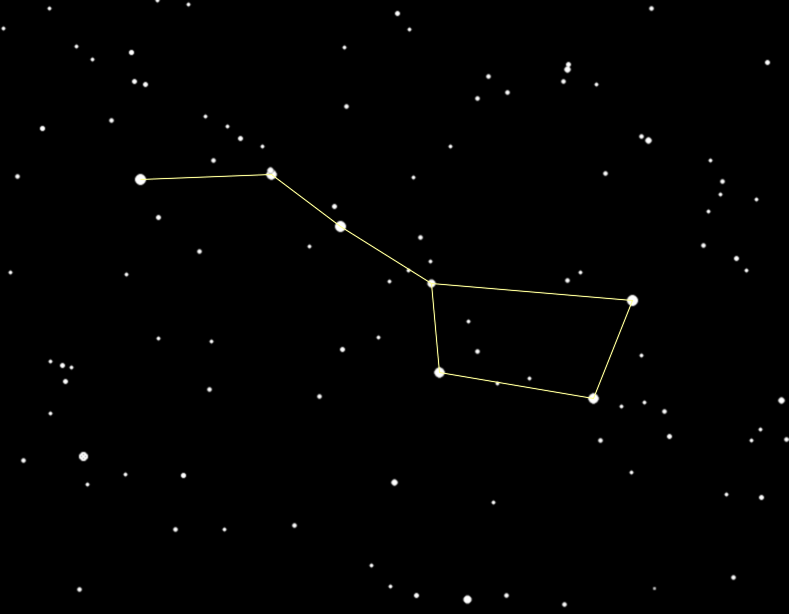
- It's really not a constellation, it's what's called an 'asterism', a highly recognizable part of a constellation. The full constellation actually is Ursa Major. {Trace out the full constellation of Ursa Major}
- The Bear's paws are also known as the Three Leaps of the Gazelle. This
asterism is the sequence of three pairs of stars - normally seen as the paws
of Ursa Major. The story is that Leo the Lion startled a gazelle, who in
turn dashed off across a great celestial pond, leaving a pair of stars marking
each of the three leaps.

- We can find two of the best and brightest galaxies in the sky just above the
two stars that form the neck of the Bear -- they are M81 and its neighbor M82.
Use the binoculars and follow the line of the Bear's neck to a skinny triangle,
then go sideways to find a pair of stars that point the same direction as the
triangle does. Just a little farther you find M81, a faint fuzzy spot just off the
end of the arc of three faint stars nearby. See it? This faint fuzzy spot is
actually a spiral galaxy, 12 MILLION light years away. When I get this one in
the telescope you'll see that there are actually two galaxies there. The other
one is M82, and it's called the Cigar Galaxy because of its shape -- it looks
flatter than M81 because we're seeing it edge-on. M82 is about the same
distance as M81, and is called a "starburst galaxy", because the gravity
from M81 is causing a burst of new star formation in the Cigar. So even
though M82 is only about a third the size of our Milky Way galaxy, it is
five times brighter!
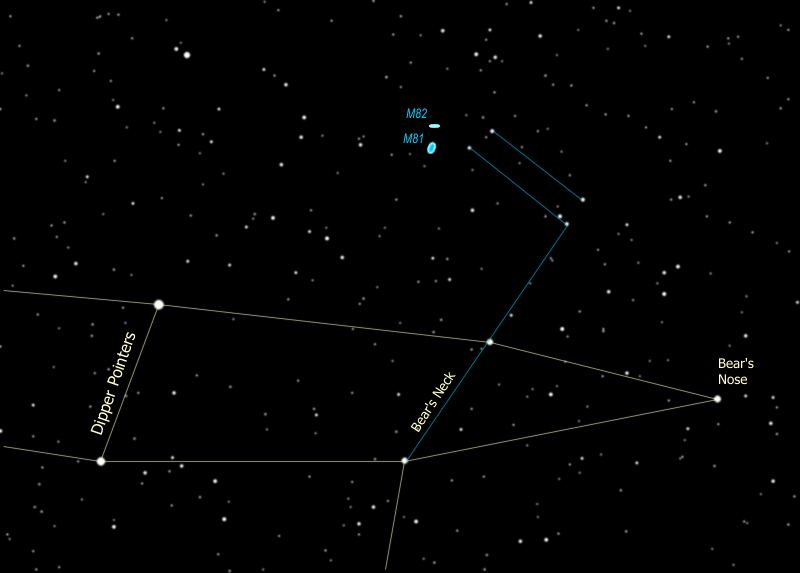
M81 is on the left, M82 is at the right 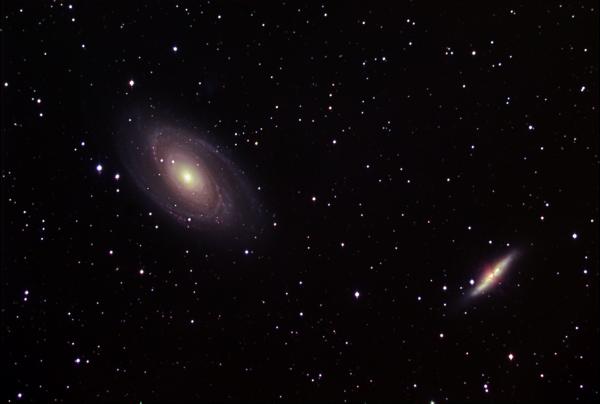
- The Big Dipper is the most important constellation (asterism) for you to
know -- it points you to important reference stars so from there you can
find your way around the sky.
The Pointer Stars of the Big Dipper are the two at the front edge of the cup -- go up from the cup to get to the North Star (Polaris).
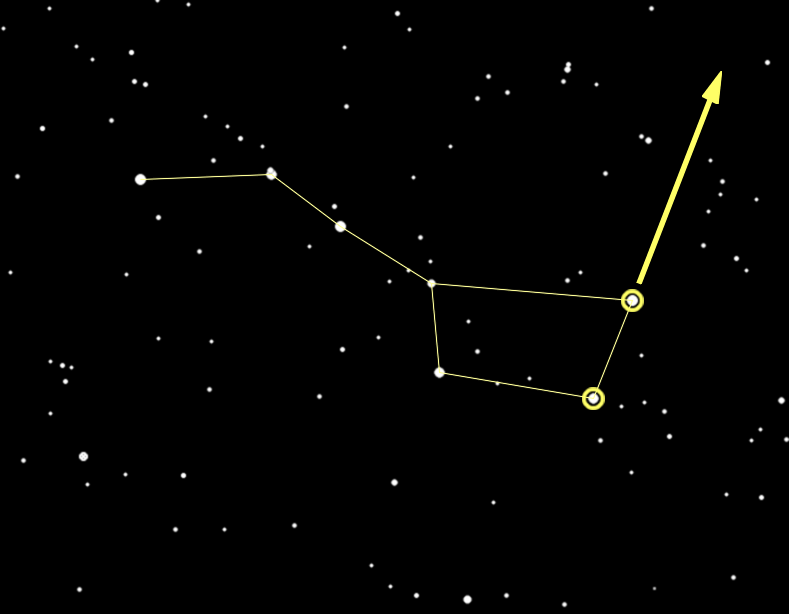
- Since the earth's north pole points to Polaris and the earth rotates around
its poles, all the constellations seem to rotate around Polaris, including
the Big Dipper. You can tell time using the Big Dipper -- it serves as a
24-hour clock.
Click on the little clock here
 for more information.
for more information. - Polaris is a part of the constellation Ursa Minor, more commonly known as
the Little Dipper. Polaris is at the tip of the handle. {Trace out
the Little Dipper.}
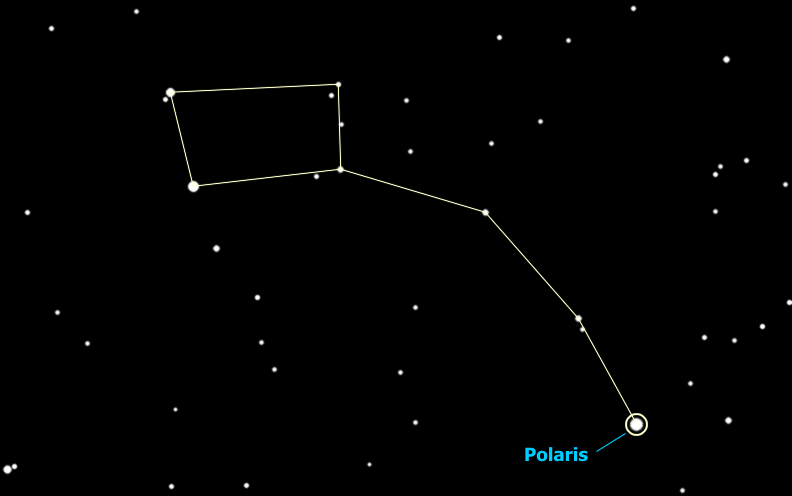
- So the Big Dipper points to the North Star -- it also points to other
important stars -- you follow the two stars across the top of the cup
and they lead you to... hey look at that, it's Capella (in Auriga).
If, instead of going up from the front of the cup, you go down from the
back of the cup, you end up at the star Regulus in the constellation
Leo. And... if you go across the cup, from the back top to the bottom
front, you end up at Castor in Gemini, which is where we are going next.
You can continue that line on until you get to Betelgeuse in Orion.
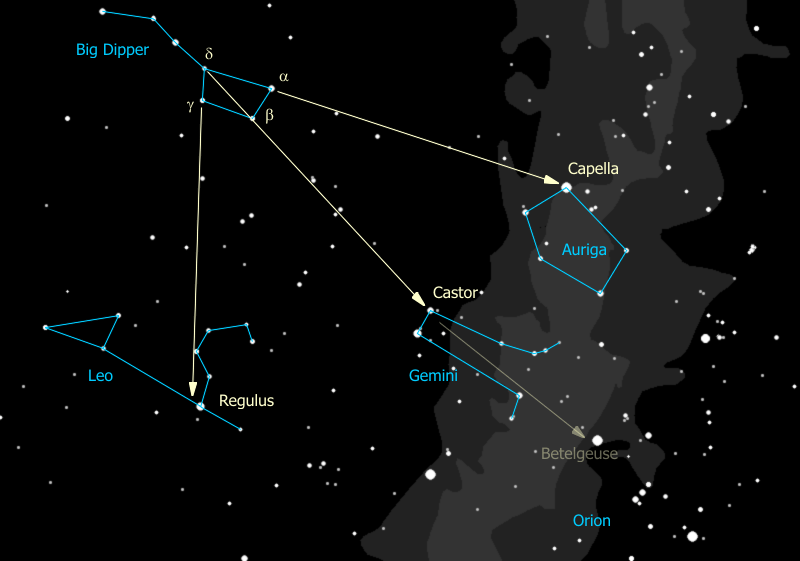
- The three stars of the handle are pointers as well, but the stars they
point to, while important, are below the horizon right now. Wait a minute
is that really three stars in the Dipper's handle or is it four? Looky
there the middle star seems to have a companion -- the bright star is Mizar
and the companion is Alcor. Who can see the companion?
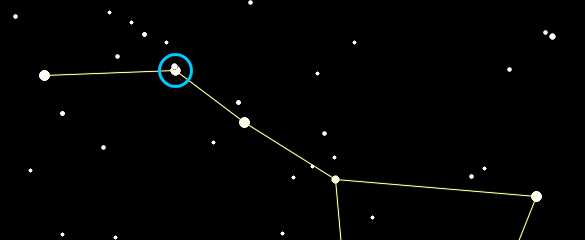
That was used by ancient Greek and Arab armies as an eye test. Some see them as a horse & rider. The Europeans saw the handle of the dipper as the tail of the Great Bear. Since bears don't have tails they danced around it by explaining that when the gods lifted the bear to the sky the tail got stretched out. Pretty lame. The Indians, who knew darn right well that bears don't have tails, saw the three stars of the handle as hunters chasing the great bear (interesting that they also saw a bear). When the constellation Ursa Major sets in the fall, the Indians explained that the hunters catch up with him and shoot him with their arrows, which is why the leaves on the trees turn red. Anyway the three stars are hunters and one of them brought his dog, so Mizar is a hunter and Alcor is his dog. Or another story is that there are three hunters pursuing the bear and one brought a pot to cook the bear in (optimistic). So Mizar is a hunter and Alcor is his pot. Yet another story involves the Pleiades. They are sometimes called "the Seven Sisters" and those with very sharp eyes can see seven stars but most people can only see six. So the story is that Mizar is riding off with the Seventh Sister.
But wait there's more! When we put the telescope on these two you'll see that Mizar is really a double star itself! So these three form a triple star. But wait... that's right... there's MORE! In reality each of the two stars that make up Mizar is a double star, too close for us to see even with a big telescope, and for that matter, so is Alcor! So Mizar & Alcor comprise a SIX STAR SYSTEM!!
 |
 |
 |
| Back to the Perseus | Winter Index | On to Zodiac Constellations |
Questions
Your questions and comments regarding the Stargazing section are welcome.
You can e-mail the author, Randy Culp for inquiries,
suggestions, new ideas or just to chat.
Updated 18 July 2023
